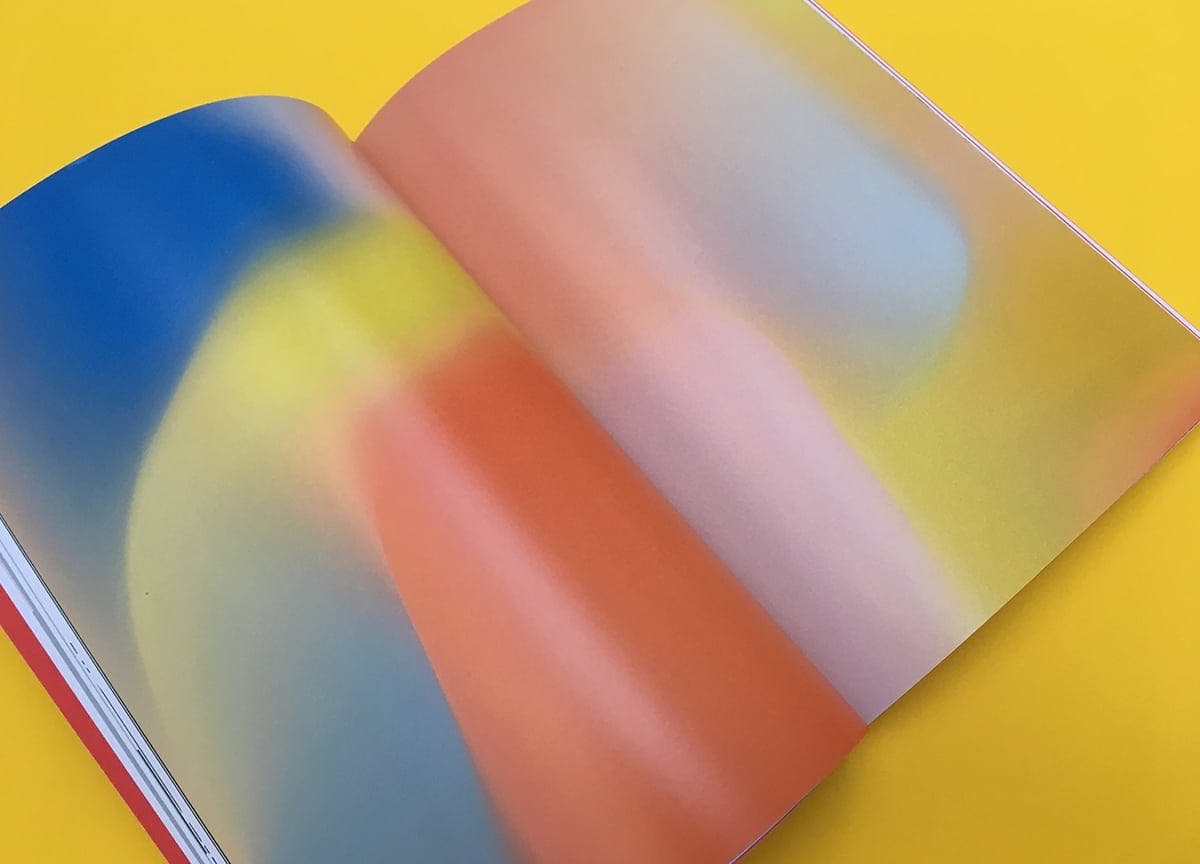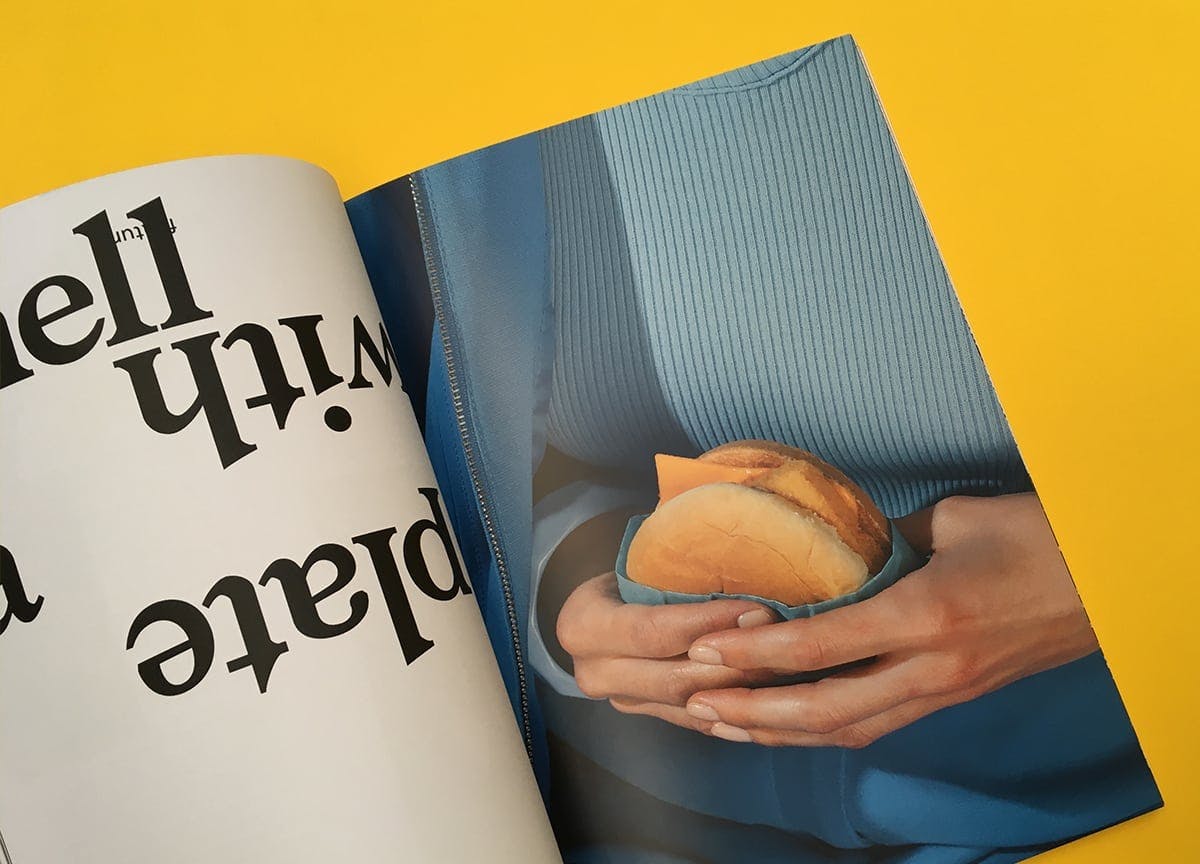This Way Up is a playful magazine about self-initiated projects
It took me a minute to figure out the orientation of This Way Up magazine. Between the upside down covers, type meanders with no concern for bearings, taunting the reader to find the right way up. Perhaps this quest for navigation is fitting for a magazine reporting on a range of self-initiated projects that give curious people a sense of fulfilment.

The issue opens with one of the easiest ways to exhibit a creative side hustle, as we see Instagram accounts that document mundane design tidbits like the colourful seats of public transport in London (below). Short reviews of similarly irreverent art follows — unhurried pages showing the subconscious art of graffiti removal, or a photographic series that colour-matches the shades of clothing with snack foods.
Long form interviews take a conversational tone, opening up closets-full of side projects and advice on idea generation. Karl Toomey, for one, talks about working on paintings inspired by real estate site Rightmove, and never wanting to let the humour in his work come off as mean spirited. It’s a delightful and inspiring take on creative culture, and we got in touch with founder Adam Hunt to find out more.


From the upside down cover, it is clear that This Way Up wants to challenge conventional formats of print magazines. Can you tell us about the magazine’s design?
I wanted TWU to be a bit disruptive (sorry for using the buzzword) and for it to have an interactive reading experience. By having the front cover and masthead upside down, the aim is to draw people’s attention. I’ve found that most people turn it round in their hands, open it, then look confused. I want people to engage with the magazine, and by having type running in different directions, it keeps readers on their toes.


Why did you choose the theme, ‘Love and Happiness’ for the first issue?
It just made sense to start there. The projects featured are the ones people really love, because they’re not getting paid to do them — they’re projects they really want to do, stuff that brings them a great deal of happiness. It was the same for me, I really wanted to do this magazine and I knew designing something and giving people the chance to talk about their work — showing it off to the world, in print, rather than on a small corner of the internet somewhere — would bring them and me a great deal of happiness.
The theme for issue two will be ‘Development’. Another reason people work on side projects is to learn and develop skills. Being the second issue, there will be some growing and developing for myself and the magazine too, so there are some nice parallels there.
Do you have a favourite quote on self-initiated projects by someone in the issue?
There’s two which come to mind straight away. Karl Toomey said “It’s like a spirit level, personal work keeps the balance.” I also quite like the interview with Nick Asbury, who said this about coming up with ideas: “It’s like your mind is a bingo card and fate is calling out the numbers, and occasionally you shout ‘line!’”

I love the interview with Karl Toomey — what’s something you learned from speaking to him?
Karl’s interview is one of my favourites. He has this fantastic energy and he’s a super nice guy. The things he’s working on kind of blew my mind, a lot of it is very experimental and it’s inspiring to hear someone really pushing an idea and just seeing where it takes you. It’s something I’d like to do more of, focusing less on the end product and just trying stuff out.

After speaking with Karl, he said that the questions I’d asked, and a few of the things we spoke about, had really made him think about his work in a new and different way, which he was really happy about. Things like that are always nice to hear.


You said in the editor’s letter that the magazine took longer that anticipated. What were the obstacles you met as an independent publisher and do you have any advice for people who are starting out?
As TWU is a side project of my own, it’s always hard to put aside time — work can easily drop off when you’re busy with your day job and other personal commitments. I’m a designer by profession at Wieden+Kennedy and I’ve made a lot of printed items in the past, so I felt pretty clued up in those respects. My main challenge was interviewing and writing, I’ve never interviewed anyone before — not the best thing, you might think, for running a magazine. But, if I’m honest, those are some of the things I’ve enjoyed the most. It’s rewarding talking to these amazing people who are making incredible work. Building relationships with those people is also very special.
My advice is pretty boring — it’s just ‘stick at it’. It took me two years from having the idea to getting it out into the world. I think you spend a lot of your time, or I did anyway, worrying and procrastinating, trying to figure out what people might think, how it might be received and I’ve found it’s best to learn by doing. Get something out into the world, don’t sit with it in your head or on a hard drive.
There’s this quote by Andy Warhol, he said (supposedly, you never know how much you can trust the internet): “Don’t think about making art, just get it done. Let everyone else decide if it’s good or bad, whether they love it or hate it. While they are deciding, make even more art.” And I think that applies to any independent magazine or self-initiated project.


www.thiswayupmag.co.uk
@thiswayupmag
—
We love independent magazines — subscribe to Stack from £7/month and we’ll send you our favourites







